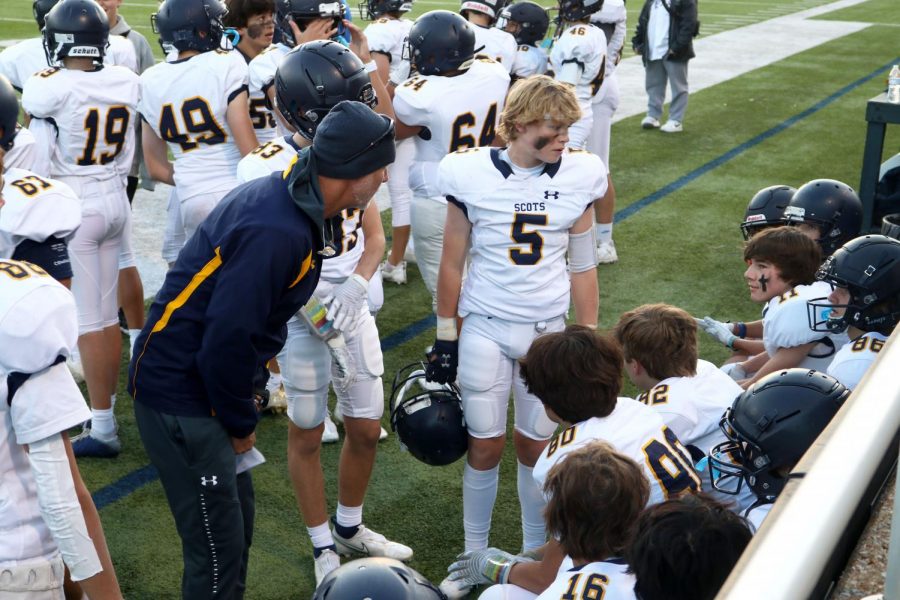The addition of a 7A football conference within the University Interscholastic League would greatly benefit the majority of schools in Texas.
In the UIL, Texas schools are assigned a classification based on their school size, from 1A to 6A, increasing as school size increases. The 1A schools have 104 students or less and play six-man football, while 6A schools have 2,220 students or above competing in larger state championships.
This system sounds complicated but actually becomes quite simple when explained. The 1A, 2A, 3A, 4A and 5A conferences are separated into two divisions each, Division I and Division II, with Division I having slightly bigger schools and Division II having slightly smaller schools. Each division has its own playoff bracket and its own state champion.
6A does this similarly. After the regular season ends, the four teams in each district that advance to the state level are divided by the size of their schools. The two larger schools are placed in Division I and the other two slightly smaller schools are placed in Division II.
Ultimately, there are two state champions in each classification, from 1A to 6A.
The UIL enforces a quota on the amount of teams each conference to create a balanced schedule of home and away games that create an easy and simple bracket for playoffs. With too many teams in one conference, the football season would be too long and the playoffs bracket would become unbalanced.
If the number of the schools in a conference is above the limit, they move schools up a conference. Currently, there are 188 schools in 4A, 251 in 5A and 245 in 6A.
However, this limit is loose. Often, the UIL board has solved the issue of too many 5A and 6A schools by pushing schools down to 4A. This isn’t sustainable. Due to a rapidly growing Texas population, these extra big 4A schools eventually have to become 5A schools.
What were previously 3A and 4A schools are now being moved up to the big leagues, and this poses a problem in classification due to the limits on how many schools can be in a certain conference.
Another problem is the sheer size difference between the small 6A schools and the large 6A schools. It is simply unfair for barely-6A 2,300 person schools to compete against 4,000 student powerhouses like Allen and Lewisville.
The answer is an overhaul to the UIL classification system that pushes the largest schools in 6A into a newly created 7A conference, instead of changing the student enrollment quota in the 3A and 4A conferences. This new conference would provide a more long term solution than a constant changing of the rules.
Some of the biggest schools in Texas, with student bodies of 3,000 and up, such as Allen, Plano West and Odessa would be moved up to 7A and separated internally into Division I and Division II teams.
The addition of a 7A conference, in theory, might not seem to affect the school.
Only 6A schools would be moving in the classification system, and the only time that the school plays non-5A teams is in the non-district matches, which don’t have any bearing on the outcome of state titles. Even then, the school emerges victorious, such as with the recent non-district matches versus schools like Rockwall and Flower Mound.
However, it affects the school in terms of our current placement. The introduction of 7A would mean a rather large change to the UIL classifications system. Not only would the extremely large 6A schools like Plano be moved up, but also the schools below them would change.
The UIL performed its biennial conference realignment in 2019, placing the school in 5A until 2022. The school had an enrollment number of 2,209. This was just 11 students short of being a 6A school, which requires a student body of 2,220.
The school is currently the second largest 5A school in Texas, just behind Austin Anderson. With the addition of a new conference, there would be room for the largest 4A and 5A schools to be moved up into a new conference. This could mean that the school, during the 2022 realignment, could be classified as a 6A school as the 5A school quota is reached.
Being classified as a 6A school could prove challenging for the football team. In 2014 to 2016, the school was classified as a 6A school, by just a few students. These seasons were some of the worst the team has had yet, going 10-2 in the district and losing in the second round of the state championship both years. While the team emerges victorious against other 5A schools like McKinney, the school does not have the strength necessary to compete against the athletic powerhouses of the 6A conference such as North Shore and Duncanville.
Even though the addition of the 7A conference could end the school’s winning streak and reputation as a dominating football team, it is worth it in order to even out the playing field in the 6A conference. There is more to high school football than a single football team living in the bubble, and the benefits outweigh the negatives for the grand majority of schools.




